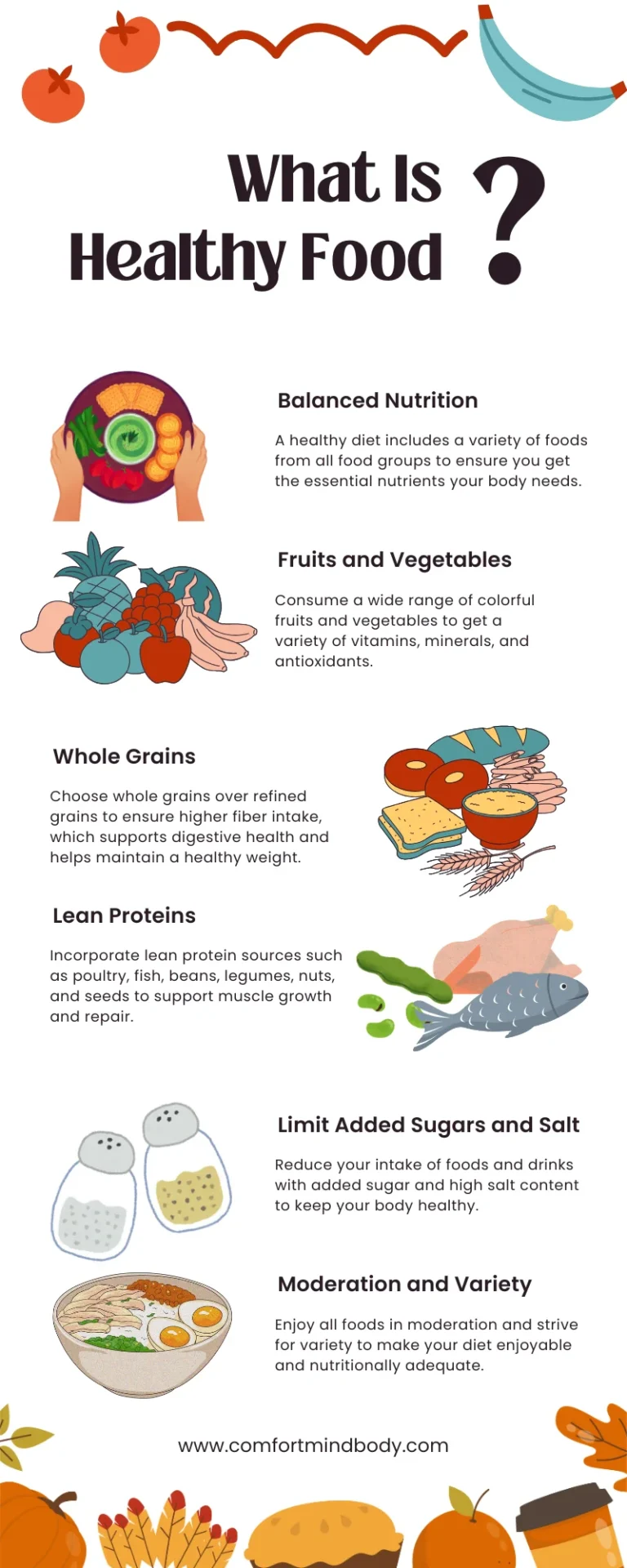Table of Contents
ToggleIntroduction:
In the quest for optimal health and weight loss, metabolism often takes center stage. Understanding how to boost your metabolism can be a game-changer. Metabolism Boosting Foods are here!
But what exactly is metabolism?
Simply, it’s the process by which your body converts what you eat and drink into energy. This energy is then used to fuel everything from breathing to exercising. The speed of this process varies from person to person. Some people have a faster metabolism naturally. Others may need some help to speed it up.
That’s where metabolism-boosting foods come into play. These are foods that have been scientifically proven to increase your metabolic rate. They help your body burn more calories, even when you’re at rest.
In this comprehensive guide, we’ll delve into the top 10 metabolism-boosting foods. We’ll explore why they’re beneficial, how they work, and how you can incorporate them into your diet.
This guide is for you if you love fitness, want to lose weight, or want to eat better.
We’ve combined extensive research with practical dietary advice to provide you with the most value.
So, let’s embark on this journey to understanding and boosting your metabolism. Remember, the goal is not just weight loss, but improved overall health.
Ready to get started? Let’s dive in.
Understanding Metabolism and Its Role in Weight Loss
Before we look at foods that can help your metabolism, let’s understand what metabolism is. We also need to know how it works. This understanding will help you make informed dietary choices.
It will also help you appreciate the role of metabolism in weight loss.
What is Metabolism?
Metabolism is a term that describes all the chemical reactions in your body. These reactions keep your body alive and functioning. But when people talk about metabolism in the context of weight loss, they’re usually referring to metabolic rate.
This is the rate at which your body burns calories for energy. The higher your metabolic rate, the more calories you burn. And the more calories you burn, the easier it is to lose weight or maintain a healthy weight.
How Does Your Metabolism Work?
Your metabolism is constantly at work, even when you’re at rest. Your body needs energy for many “hidden” functions. These include breathing, circulating blood, adjusting hormones, and growing or repairing cells.
The calories used for these basic functions make up your basal metabolic rate (BMR). Your BMR accounts for about 60 to 75 percent of the total calories you burn each day.
Physical activity and the process of digesting food make up the rest.
Factors Affecting Metabolic Rate
Several factors can affect your metabolic rate. Firstly, your body size and composition. People who are larger or have more muscle burn more calories, even at rest.
Secondly, your sex. Men usually have less body fat and more muscle than women of the same age and weight. This means men burn more calories.
Thirdly, your age. As you get older, the amount of muscle tends to decrease, and fat accounts for more of your weight. This slows down calorie burning.
Other factors that can affect your metabolic rate include your physical activity level, diet, and certain medical conditions. It’s also worth noting that genetics play a role in metabolism speed.
Some people naturally burn calories more slowly than others. While you can’t control all of these factors, you can control your diet. And that’s where metabolism-boosting foods come in.
In the next section, we’ll explore the science behind these foods and how they can help increase your metabolic rate.
The Science Behind Metabolism Boosting Foods
Certain foods can increase your metabolism. They do this by promoting thermogenesis, influencing macronutrient metabolism, and supporting hydration. Let’s delve into the science behind these processes.
Thermogenesis and Calorie Burning
Thermogenesis is the process of heat production in organisms. It’s a metabolic process that burns calories. Certain foods can increase thermogenesis and thus boost your metabolism. These foods are often referred to as thermogenic foods. They include protein-rich foods, spicy foods, and certain beverages like green tea and coffee. Protein-rich foods, for example, have a high thermic effect.
This means your body burns more calories digesting proteins than it does digesting fats or carbohydrates. Spicy foods, on the other hand, contain compounds that can increase thermogenesis.
For instance, capsaicin, a compound found in chili peppers, can boost your metabolism by increasing thermogenesis. Similarly, the caffeine in green tea and coffee can stimulate thermogenesis, helping you burn more calories.
The Role of Macronutrients in Metabolism
Macronutrients are the nutrients your body needs in large amounts. They include proteins, carbohydrates, and fats. Each of these macronutrients plays a unique role in metabolism.
As mentioned earlier, proteins have a high thermic effect. This means they can boost your metabolism by increasing thermogenesis. Carbohydrates, on the other hand, can influence your metabolism based on their type.
Complex carbohydrates, like whole grains and legumes, are digested slowly. This slow digestion can help maintain steady blood sugar levels and keep your metabolism running at a steady pace.
Fats, particularly unsaturated fats, can also support metabolism. Unsaturated fats, found in avocados and olive oil, can help you burn more calories while resting. They can also help your body absorb essential vitamins that support metabolic function.
Hydration and Metabolic Function
Water is essential for all metabolic processes. Staying hydrated can therefore support your metabolism. Even mild dehydration can slow down your metabolism. Drinking water can also temporarily boost your metabolism.
Studies have shown that drinking 500 ml of water can increase metabolic rate by 30% for about an hour. This effect is even greater if the water is cold, as your body uses energy to heat it to body temperature. Water-rich foods, like fruits and vegetables, can also contribute to hydration and thus support metabolic function.
In addition to water, other beverages like green tea and coffee can also support hydration and metabolism. However, it’s important to note that these beverages should not replace water as your main source of hydration.
In the next section, we’ll explore the top 10 foods that can boost your metabolism through these mechanisms.
The Top 10 Metabolism Boosting Foods
Now that we know how metabolism-boosting foods work, let’s look at the top 10 foods that can improve your metabolism.
These foods have been chosen for their nutrient density, thermogenic properties, and ability to support overall metabolic health.
1. Protein-Rich Foods: Eggs and Lean Meats
Protein-rich foods like eggs and lean meats are excellent for boosting metabolism.
They have a high thermic effect. This means your body burns more calories digesting proteins than it does with fats or carbohydrates.
Eggs are a complete protein source, providing all the essential amino acids your body needs.
Lean meats, like chicken and turkey, are also high in protein and low in fat.
In addition to boosting metabolism, protein-rich foods can also promote satiety, helping you feel full and eat less.
Here are some ways to incorporate these foods into your diet:
- Start your day with a protein-packed breakfast of eggs and lean meats.
- Include lean meats in your lunch and dinner meals.
- Snack on hard-boiled eggs or lean meat slices between meals.
2. Fiber-Rich Foods: Legumes and Whole Grains
Fiber-rich foods like legumes and whole grains can also boost your metabolism.
These foods digest slowly. They help keep blood sugar levels steady and support a consistent metabolism.
Legumes, like beans and lentils, are high in fiber and protein.
Whole grains, like oats and brown rice, are also rich in fiber and can support digestive health.
Here are some ways to incorporate these foods into your diet:
- Include a serving of legumes in your lunch and dinner meals.
- Start your day with a bowl of whole-grain cereal or oats.
- Use whole-grain bread for your sandwiches.
3. Antioxidant-Rich Foods:
Antioxidant-rich foods like berries and dark leafy greens can support metabolic health by combating oxidative stress.
Berries, like blueberries and strawberries, are packed with antioxidants and fiber.
Dark leafy greens, like spinach and kale, are also rich in antioxidants and other essential nutrients.
Here are some ways to incorporate these foods into your diet:
- Add a handful of berries to your breakfast cereal or yogurt.
- Include a serving of dark leafy greens in your lunch and dinner meals.
- Snack on fresh berries between meals.
4. Thermogenic Spices: Chili Peppers and Ginger
Thermogenic spices like chili peppers and ginger can boost your metabolism by increasing thermogenesis.
Chili peppers contain capsaicin, a compound that can increase thermogenesis and boost metabolism.
Ginger can also enhance thermogenesis and has additional digestive benefits.
Here are some ways to incorporate these spices into your diet:
- Add chili peppers or ginger to your meals for a spicy kick.
- Drink ginger tea for a warming and metabolism-boosting beverage.
- Use chili pepper flakes as a topping for your meals.
5. Green Tea and Matcha
Green tea and matcha are excellent beverages for boosting metabolism.
They contain catechins, antioxidants that can enhance fat oxidation and boost metabolism.
In addition, they also contain caffeine, which can stimulate thermogenesis.
Here are some ways to incorporate these beverages into your diet:
- Drink a cup of green tea or matcha in the morning or afternoon.
- Use matcha powder in your smoothies or baking recipes.
- Replace your regular tea or coffee with green tea for a metabolism-boosting alternative.
6. Caffeine Sources: Coffee and Yerba Mate
Caffeine sources like coffee and yerba mate can increase your metabolic rate. Caffeine is a stimulant that can increase thermogenesis and help you burn more calories. Coffee is a popular source of caffeine and also contains antioxidants.
Yerba mate is a traditional South American beverage that is also rich in caffeine and antioxidants. Here are some ways to incorporate these beverages into your diet:
- Drink a cup of coffee or yerba mate in the morning or afternoon.
- Replace your regular tea with yerba mate for a caffeine boost.
- Use coffee in your baking recipes for a unique flavor and metabolism boost.
7. Omega-3 Rich Foods:
Eating foods high in omega-3 has been proven to offer many benefits for health and well-being. Omega-3 fatty acids, especially EPA and DHA, are important for controlling inflammation. They also help improve heart health and support brain function.
Foods rich in omega-3s, such as fatty fish like salmon, mackerel, and sardines. As well as walnuts, chia seeds, and flaxseeds, have been shown to reduce the risk of cardiovascular disease. By lowering triglycerides, slowing the growth of plaque in arteries, and preventing blood clots.
Additionally, omega-3s have been found to alleviate symptoms of depression, anxiety, and bipolar disorder. By promoting healthy neurotransmitter function and reducing inflammation in the brain.
Furthermore, omega-3-rich foods have been linked to improved cognitive function, memory, and focus. Making them an essential component of a healthy diet for individuals of all ages.
Eating foods rich in omega-3 can greatly improve your health and quality of life.
8. Fermented Foods:
Kimchi, Sauerkraut, Yogurt
Fermented foods, such as kimchi, sauerkraut, and yogurt, have gained immense popularity in recent years, and for good reason. These foods are rich in probiotics. Which play a vital role in supporting gut health and, in turn, influencing metabolism.
The gut microbiome, comprising trillions of microorganisms, is a delicate ecosystem that affects various physiological processes. Including digestion, immune function, and energy metabolism.
Probiotics, found in fermented foods, help maintain a balanced gut microbiome by introducing beneficial bacteria. Such as Lactobacillus and Bifidobacterium, which outcompete pathogenic microorganisms, reducing inflammation and improving the integrity of the gut lining. This, in turn, can lead to enhanced nutrient absorption, improved digestion, and a boosted metabolism.
Moreover, research suggests that an imbalance of the gut microbiome, also known as dysbiosis, may contribute to metabolic disorders. Including obesity and insulin resistance.
Therefore, incorporating fermented foods into one’s diet can have a profound impact on overall health and well-being. To enjoy the benefits of fermented foods, start small. Add one serving of kimchi or sauerkraut to your meals each day. Gradually increase the amount as your taste buds and gut adjust.
9. Cruciferous Vegetables:
Broccoli, Cauliflower, Cabbage
Leafy greens like spinach, kale, and collard greens are strong vegetables. They help support energy production and metabolism. These nutrient-dense foods are rich in essential minerals. Such as iron and magnesium, which are crucial for the proper functioning of the electron transport chain.
The electron transport chain is a group of protein complexes found in the mitochondria. These are the energy-producing parts of cells. It is here that the energy from the food we eat is converted into ATP (adenosine triphosphate). The energy currency of the body.
Iron, in particular, is necessary for the synthesis of hemoglobin, a protein that carries oxygen to the mitochondria. While magnesium is involved in the production of ATP. When we consume leafy greens, we are providing our bodies with the necessary building blocks to generate energy efficiently.
Incorporating leafy greens into our diet can be easy and delicious. You can easily add spinach to your morning smoothie. Sautéing kale with garlic and lemon makes a great side dish. These are simple ways to enjoy these healthy foods.
You can use collard green wraps instead of tortillas. You can also add chopped greens to omelets and frittatas. These are fun ways to eat more greens.
Eating leafy greens regularly can help our bodies make energy, speed up our metabolism, and improve our overall health.
10. Citrus Fruits:
Oranges, Grapefruits, Lemons
Citrus fruits, including oranges, grapefruits, and lemons, are a rich source of bioactive compounds. That has been shown to have a profound impact on fat metabolism. One of the key compounds found in citrus fruits is naringenin. Which is a flavonoid that has been extensively studied for its potential to improve metabolic health.
Naringenin can block some genes that help with fat metabolism. This reduces fat buildup in body fat tissue. Additionally, naringenin has been found to increase the expression of genes involved in fatty acid oxidation. Leading to an increase in the breakdown of fat for energy production.
Citrus fruits are rich in flavonoids like hesperidin and didymin. These compounds can reduce inflammation and improve insulin sensitivity. Citrus fruits are a great choice for a diet aimed at weight management and good metabolic health.
Citrus fruits are healthy and tasty. They help support a good metabolism and fit well into a balanced diet.
How to Incorporate Metabolism-Boosting Foods into Your Diet
Now that we have looked at the top 10 foods that boost metabolism, let’s talk about how to add them to your daily diet.
Remember, the goal is not to drastically change your eating habits overnight. Instead, aim for gradual changes that you can sustain in the long term.
Meal Planning with Metabolism Boosting Foods
Meal planning is a great way to ensure you’re incorporating these metabolism-boosting foods into your diet. Start by identifying which meals or snacks you can easily add these foods to.
For example, you could add eggs or lean meats to your breakfast, or include more legumes and whole grains in your lunch and dinner. You could also incorporate more berries and dark leafy greens into your salads or smoothies.
Don’t forget about the thermogenic spices and hydrating foods. Add chili peppers or ginger to your meals for a spicy kick, and make sure to stay hydrated with water-rich foods and beverages.
Remember, the key is to make these changes gradually and sustainably.
Don’t try to overhaul your entire diet at once. Instead, focus on one or two changes at a time. Gradually add more of these foods as you adjust to the new eating habits.
Recipes and Meal Ideas
If you’re looking for specific recipes or meal ideas, here are a few suggestions.
- For breakfast, try a protein-packed omelet with eggs, lean meats, and a side of whole-grain toast.
- For lunch, you can have a salad with dark leafy greens, berries, and salmon or flaxseeds. These foods provide omega-3 fatty acids.
- For dinner, consider a stir-fry with lean meats, legumes, and a variety of vegetables.
Don’t forget to add some chili peppers or ginger for a metabolism-boosting kick. For snacks, consider yogurt with a handful of berries, or a smoothie with green tea or matcha.
Remember, these are just suggestions. Feel free to get creative and come up with your recipes using these metabolism-boosting foods.
The key is to enjoy what you’re eating while also reaping the metabolic benefits.
Additional Tips for Boosting Metabolism
While incorporating metabolism-boosting foods into your diet is a great start, there are other factors to consider.
These include exercise, sleep, and stress management. Let’s delve into these aspects and understand how they can further enhance your metabolic health.
The Importance of Exercise and Muscle Mass
Exercise plays a crucial role in boosting your metabolism. It helps burn calories and build muscle mass.
Why is muscle mass important?
Muscle burns more calories than fat, even at rest. This means the more muscle you have, the higher your resting metabolic rate.
Strength training is particularly effective for building muscle mass. This includes weight lifting, resistance band exercises, and bodyweight exercises.
But don’t neglect cardio.
Activities like running, cycling, and swimming also contribute to a higher metabolic rate. Remember, consistency is key. Aim for at least 150 minutes of moderate-intensity or 75 minutes of high-intensity exercise per week.
Also, consider incorporating high-intensity interval training (HIIT) into your routine. HIIT has been shown to significantly increase metabolic rate, even after the workout is over.

Sleep, Stress, and Metabolic Health
Sleep and stress also play a significant role in your metabolic health. Lack of sleep can negatively impact your metabolism and lead to weight gain.
Aim for 7-9 hours of quality sleep per night. Good sleep hygiene can help. This includes maintaining a regular sleep schedule, creating a restful environment, and avoiding screens before bed.
Stress, on the other hand, can lead to overeating and unhealthy food choices. This can disrupt your metabolism and lead to weight gain. It’s important to find healthy ways to manage stress.
This could include exercise, meditation, deep breathing exercises, or talking to a mental health professional. Remember, boosting your metabolism is not just about what you eat.
It’s about adopting a holistic approach to health that includes diet, exercise, sleep, and stress management.
Common Myths About Metabolism:
When it comes to metabolism, there are many myths and misconceptions. Let’s debunk some of the most common ones.
Myth 1: Thin people have a faster metabolism.
While body size can influence metabolic rate, it’s not the only factor. Muscle mass, age, and genetics also play a role.
Larger individuals may have a higher metabolic rate because they have more mass to fuel.
Myth 2: You have no control over your metabolism.
While genetics do influence your metabolic rate, it’s not set in stone. Diet, exercise, and lifestyle changes can all help boost your metabolism.
Myth 3: Eating late at night slows down your metabolism.
What matters more is the total amount of calories you consume throughout the day, not the timing. However, late-night eating can lead to unhealthy food choices and overeating.
Myth 4: All calories are created equal.
Not all calories have the same impact on your metabolism. Protein-rich foods, for example, require more energy to digest than fats or carbohydrates. This is known as the thermic effect of food.
Myth 5: Starvation mode will slow down your metabolism.
Eating too few calories can lower your metabolic rate. This usually happens as a survival response to long periods of very low-calorie intake, not short-term dieting.
It’s important to avoid very low-calorie diets. They can cause nutrient deficiencies and other health issues.
Remember, a healthy metabolism is about more than just quick fixes or following fad diets. It’s about adopting a balanced, sustainable approach to eating and living.
Conclusion and Next Steps
In conclusion, boosting your metabolism is not just about the foods you eat. It’s about adopting a holistic approach to health. This includes regular exercise, adequate sleep, and stress management.
The top 10 metabolism-boosting foods we’ve discussed can certainly help. But remember, they are most effective when part of a balanced diet. Avoid relying solely on these foods for weight loss. Instead, incorporate them into your diet along with other nutrient-dense foods.
Remember, everyone’s metabolic rate is different. What works for one person may not work for another. Consult with a healthcare professional before making significant dietary changes.
Additional Resources and References
For more information on metabolism and nutrition, consider these resources.
- The Academy of Nutrition and Dietetics offers a wealth of information on healthy eating.
- The Mayo Clinic also provides comprehensive guides on nutrition and weight loss.
- For scientific research, PubMed is a reliable source of peer-reviewed studies.
Remember, knowledge is power when it comes to your health.
Best Weight Loss Supplements:
Synogut:
Unlock your digestive health with our all-natural formula, crafted to keep you energized and thriving!

LeanBiome
Leanbiome Pills are made with natural ingredients. They are also free from harmful additives and preservatives.
Best Prescribed Weight Loss Supplements:

GLP-1: Semaglutide for Weight Loss
Semaglutide mimics a gut hormone called GLP-1 (glucagon-like peptide-1). When you eat, GLP-1 slows digestion and helps you feel full. It also:
- Has the same active ingredient as Ozempic® and Wegovy®.
- Is clinically proven to help lose 15-20% of body weight.

Ozempic® for Weight Loss
Ozempic® mimics a gut hormone called GLP-1 (glucagon-like peptide-1). When you eat, GLP-1 slows digestion and helps you feel full. It also:
- Enhances the body’s response to sugars
- Is clinically proven to help lose 15-20% of body weight.
Affiliate Disclosure:
The links contained in this product review may result in a small commission. This goes towards supporting our research and editorial team and please know we only recommend high-quality products.
Note: This article is for informational purposes only and is not intended to diagnose, treat, or cure any disease. Always consult a healthcare professional before taking any supplement or making any changes to your diet or lifestyle.





